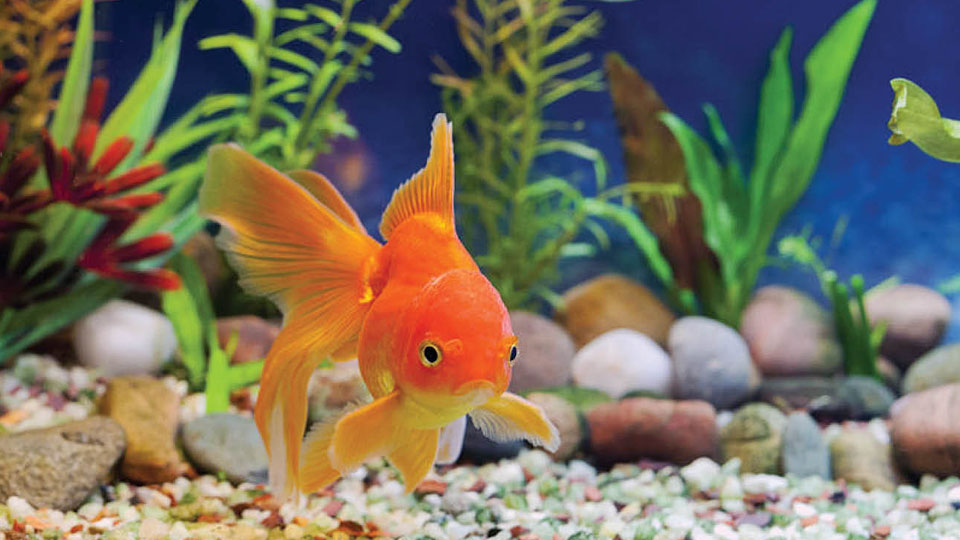By Maneka Gandhi
In this week’s Pet Talk, learn how to determine the sex of your fish and about aquarium plants.
How to determine the sex of your fish?
Observing Fish to Determine Sex: Look for a nuchal hump on male fish. A nuchal hump is a small bump on the forehead of a fish. The presence of one can be taken as confirmation that a fish is male. Identify a male fish if it has large dorsal or anal fins. Some male fish, like cichlid species, have dorsal and anal fins larger than their female counterparts. By comparing several different examples of the same fish, you’ll be able to determine the sex of a cichlid fish. Fish include tilapia, angelfish, oscars, and discus.
Spot a larger anal fin on certain male fish. Fish in the family Poeciliidae have a modified anal fin that is used for sexual reproduction. This fin looks like a triangle. The presence of this attribute on certain fish may help confirm that they are male. This is an appropriate way to identify the sex of mollies, guppies, swordtails, platies, and wags. Watch for seasonal bumps on male fish. Some male fish, like goldfish, develop many small bumps on them during the spring. These bumps usually develop on the forehead, near the gills, and on the pectoral fins. These bumps will disappear at the end of breeding season, in the early summer. Bumps may vary in size and colour, depending on the species.
Note that larger fish may be female. With some species, like koi, female fish may be larger. This is especially true during spawning time, when females will appear more full-bodied and may have larger abdomens. The roundness of a female fish is often a result of an accumulation of eggs or fry.
Watch for flashy growth on males during breeding season. During breeding season, male fish will tend to grow or develop attributes that make them flashier. It is important to note, though, that female fish may develop similar features but to a less extreme extent. Male pleco fish, for example, will grow long bristles on their pectoral fins as well as around the edge of their mouth and head. While females will grow similar bristles, they’ll tend to be smaller.
Look for aggressive behaviour to identify a male fish. Aggressive behaviour can be identified as being very territorial. In addition, aggressive fish may swim quickly at other fish that come near them. Sometimes, males are more aggressive than females. However, sometimes behaviour may not tell you much at all about sex. Male pleco fish may be more aggressive. This, though, might vary based on the type of pleco fish. Some common names of pleco fish include: algae suckers, janitor fish, and suckermouth catfish.
Why do all freshwater fish need live plants for a healthy life?
The majority of freshwater aquarium fish show a definite preference for live aquarium plants. In a well planted aquarium, fish can find shade from glaring light, privacy from things outside of the tank that startle them and a natural safety in times of stress. Live plants allow different species, startled by larger or aggressive tank mates, to hide, or to evade the over eager potential breeding partner with some of the more aggressive species. With shoaling fish, plants give the group the currents and eddies they instinctively seek out in the wild. When breeding many species, live aquarium plants are essential surfaces for the deposit and fertilization of eggs. Live aquarium plants have natural essential algae clinging to them, or growing from them, that feed the newborn fry of many species. In short, live aquarium plants are essential in the creation of a natural, or close to natural, environment for most freshwater aquarium fish.
How to preserve the slime coat on fish?
Avoid handling fish whenever possible, which includes netting them. If you can scoop a fish up using a glass, instead of a net, you will cause far less damage to the slime coat. In general, don’t touch your fish. If you must, use a soft damp cloth to minimize the trauma. Maintain good water quality at all times. Poor water quality is one of the leading causes of fish stress, which in turn, damages the slime coating. Perform regular water changes, keep the tank clean, test the water regularly, and take steps to mitigate rising toxins such as ammonia. Do not allow the water to rapidly change temperature, as this is also a major stress factor. Whenever new fish are introduced to an aquarium, turn the lights off for a few hours to calm the newcomers, as well as the old timers, in the tank. Any time a fish is under stress, there is a risk the slime covering will be impacted. Fortunately, there are products available that help promote healthy slime coat and also provide soothing relief to damaged coatings. Use of these products is good insurance against stress and disease.
What are the pros and cons of artificial aquarium plants and real aquarium plants?
Real plants: Pros — Absorbs CO2 (in daylight), Gives off O2 (in daylight), Absorbs toxins, Harbours beneficial bacteria, Serves as food source and Inhibits algae growth; Cons — Can cause O2 deficiency at night, Creates waste when decayed, Can carry parasites, Not easy to clean and Requires good lighting.
Artificial Aquarium plants: Pros — Does not affect O2 levels, Does not create wastes, Does not carry parasites, Easily removed & cleaned and Does not need special lighting; Cons — Does not give off O2, Does not absorb toxins, Does not carry bacteria, Cannot be used as food source, Does not inhibit algae growth and Does not absorb CO2.








Recent Comments